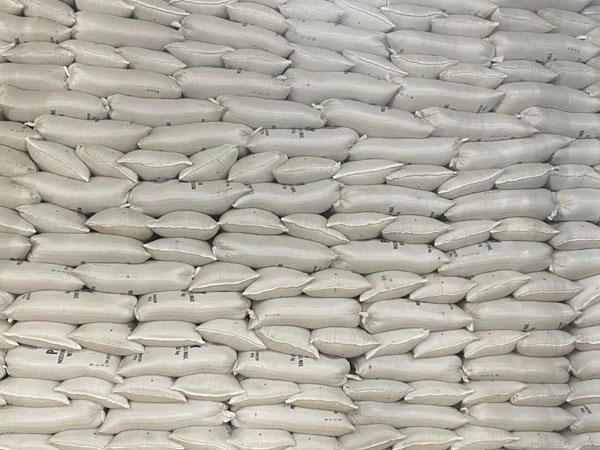A senior lawmaker of the House of Representatives on Monday expressed optimism that rice prices will drop further next year following President Ferdinand Marcos Jr.’s enactment of Republic Act (RA) No. 12078, or Agricultural Tariffication Act.
Camarines Sur Rep. LRay Villafuerte said that in signing RA 12078, or the Agricultural Tariffication Act, President Marcos “tweaked the RTL of 2019 by putting back the government’s authority in emergency situations to purchase more rice stocks and sell them directly to consumers, which will hopefully reverse the current market trend of elevated prices of the staple despite softening global prices coupled with the huge influx of stocks that importers had acquired at drastically reduced tariff rates.”
RA 12078 amended RA 11203, which lifted in 2019 the authority of the National Food Authority (NFA) to import rice in favor of allowing private traders to purchase an unlimited volume of the staple overseas so long as they pay an import tariff of 35 percent.
According to Villafuerte, RA 12078 empowers the Department of Agriculture (DA) to purchase additional rice stocks and sell them directly to consumers through Kadiwa outlets and other government channels. This move is expected to exert downward pressure on retail prices, making rice more affordable, especially for low-income households.
In the event that the DA declares, upon the recommendation of the National Price Coordinating Council (NPCC), a food supply emergency because of a rice shortage or “extraordinary” price spikes, Villafuerte said the DA Secretary is empowered to designate an entity in the Department—except for the NFA—to import the grain and sell such stocks through Kadiwa outlets, government agencies like the Department of Social Welfare and Development (DSWD), the Office of Civil Defense-National Disaster Risk Reduction and Management Council (OCD-NDRRMC), or local government units (LGUs).
Villafuerte said that allowing the NFA to buy more stocks from local farmers will ensure the sustaina101bility of the DA’s P29 and Rice-for-All (RFA) programs, which require a fairly big inventory for the government to sell continuously cheaper rice to a huge number of poor and low-income families all over the country.
Under the DA’s P29 program, the NFA sells rice at P29 a kilo to vulnerable sectors such as senior citizens, persons with disabilities (PWDs), and Pantawid Pamilyang Pilipino Program (4Ps) beneficiary families, while its RFA program involves the sale of higher-quality rice to other consumers at the current P40 a kilo (previously at P45 and then lowered to P42).
Villafuerte said that President Marcos’ enactment of RA 12078 “restores certain trading functions of the NFA to sell more rice directly to consumers so it can hopefully stave off undue price spirals in the grain during emergency situations, such as when prices are aberrantly high in the local market despite ample domestic supply cornered by private businessmen.”
“With rice accounting for a hefty share of the food expenses, most especially of poor or low-income families, empowering the NFA to once again actively intervene in the market during emergency situations under RA 12078 would make cheaper rice more accessible to our ordinary consumers and thus help take the edge off sticky inflation,” Villafuerte said.
He noted that as the 2019 RTL stripped the NFA of its original authority to acquire a critical volume of rice, this food agency has lost its capability to directly and actively intervene in the local market whenever retail costs are high because it does not have enough stocks in its warehouses at any given time to be able to influence, much less dictate, prices in the domestic market when private businessmen keep market rates high.
To reduce rice prices for consumers, President Marcos issued Executive Order (EO) No. 62 that cut the import tariff rate on the staple from 35% to just 15 percent effective last July.
Villafuerte recalled that following the issuance of EO 62, agriculture and finance officials said that the lower import cost for traders was expected to cut rice prices by an initial P6 to P7 per kilo in the latter part of 2024 or at the onset of 2025.
However, he said, such hoped-for drastic price cuts never happened, and per-kilo rates remained at the P50 to P60 even as Bureau of Plant Industry (BPI) data showed that traders had acquired a record volume of imports this 2024, part of which they had imported at the lower 15 percent tariff rate.














© Copyright 2025 The SSResource Media.
All rights reserved.